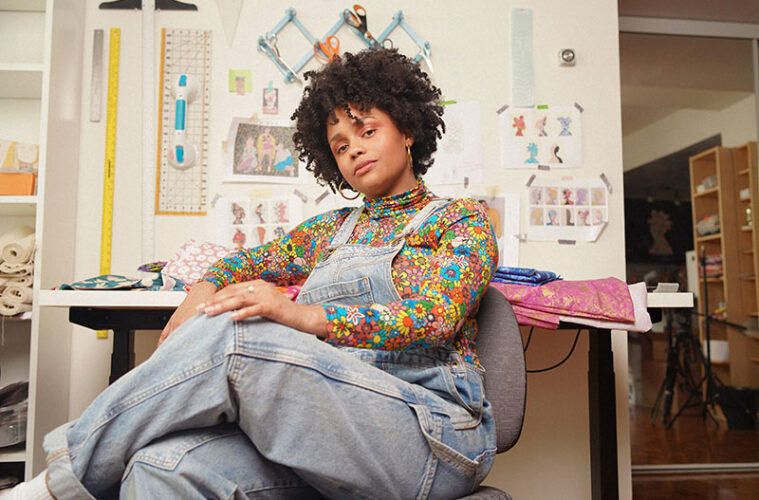The domestic arts of sewing, embroidery, and quilting result in beautiful, intricate creations that are bright, colorful, and intimate. But they’ve also been long associated with women and the home, and haven’t been given the wider artistic attention they deserve. Black women, too, are often overlooked, ignored, and left out of the rarefied world of fine art.
That’s not the case this fall at the Peabody Essex Museum (PEM), which is showcasing 12 textile-based portraits by Gio Swaby, a young Bahamian-Canadian artist who uses fabric and thread to create colorful images of the women in her life. The results are riotously colorful and intricately created portraits that Swaby has called “love letters to Black women and girls.”
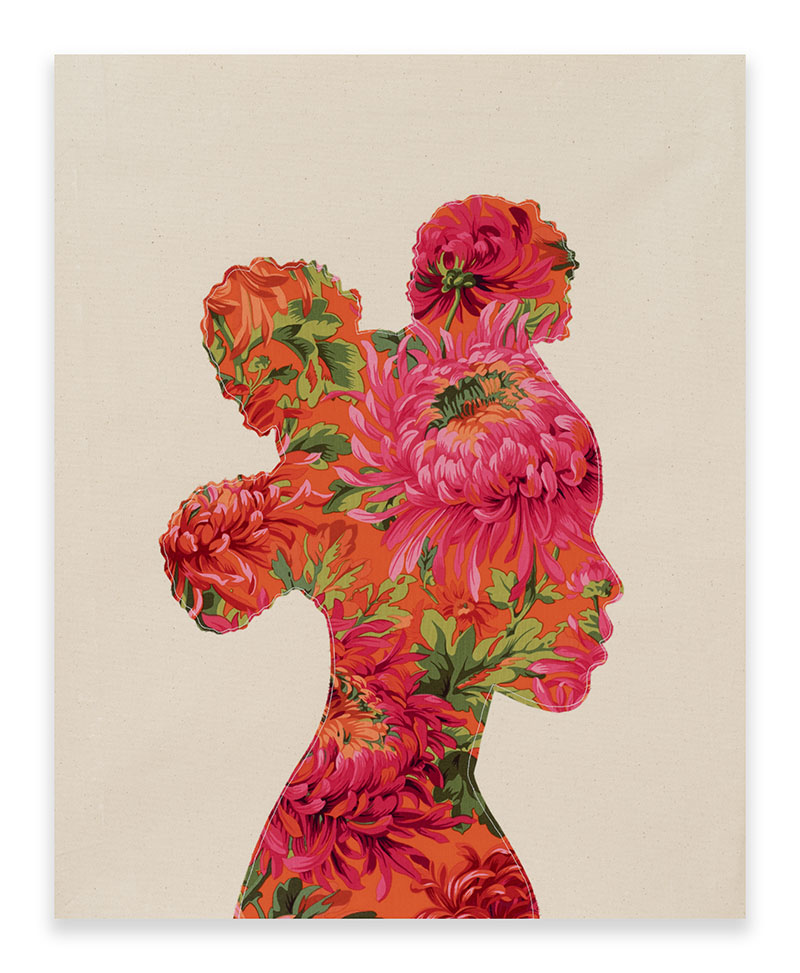
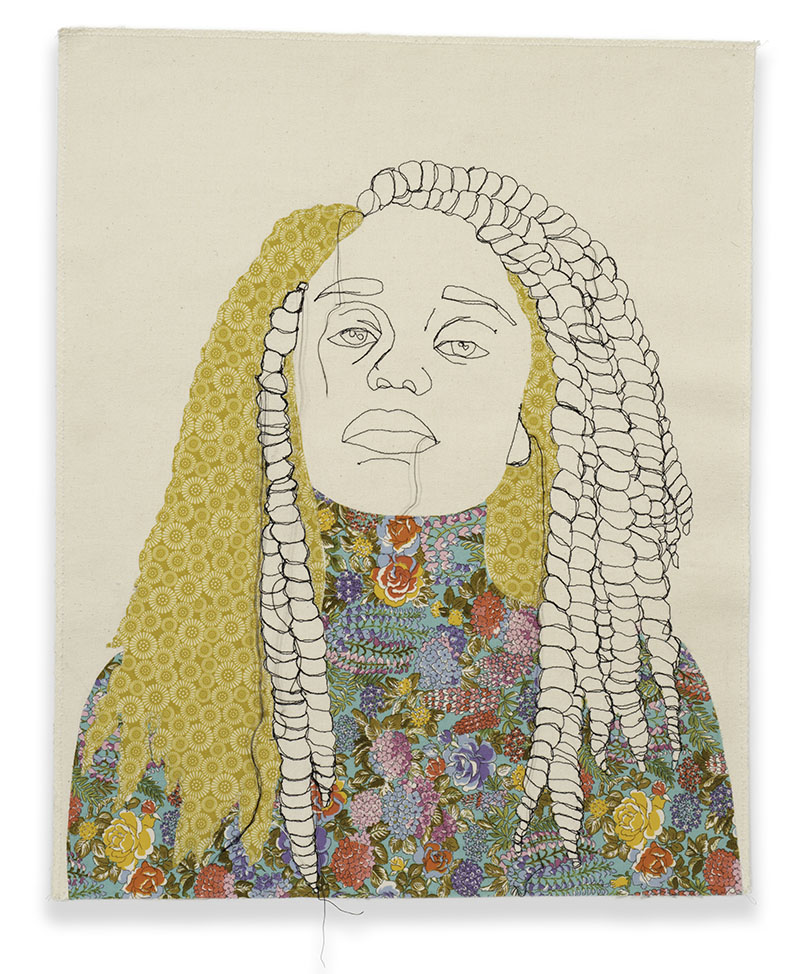
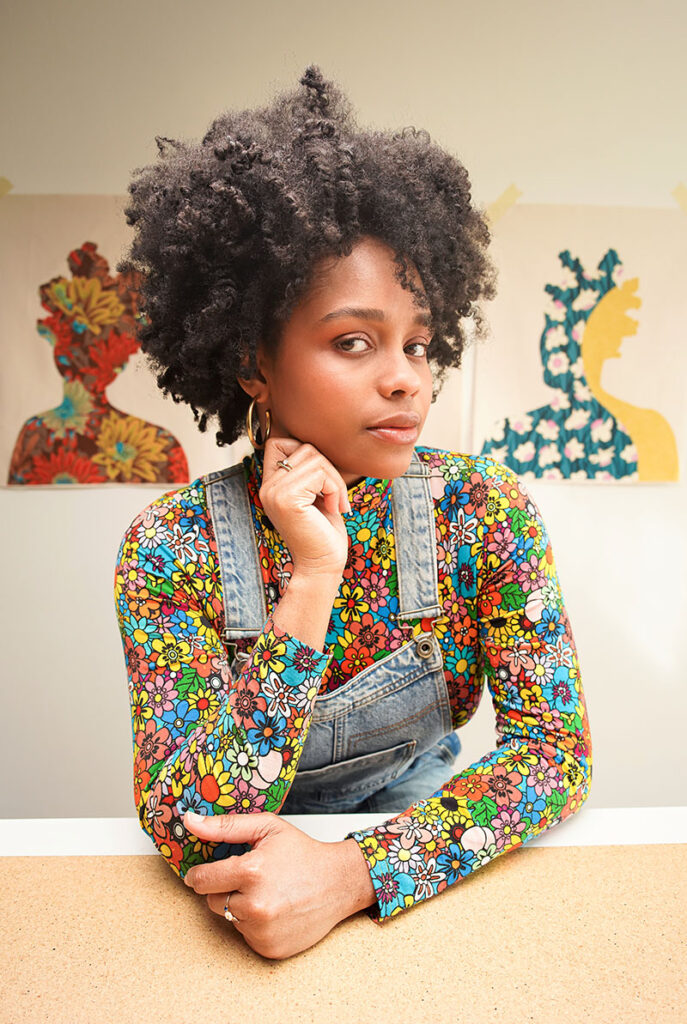
The exhibition, “Gio Swaby: Fresh Up,” is Swaby’s first solo museum show, and its PEM run marks the show’s New England debut. It’s on view through November 26.
According to PEM curator Lydia Peabody, the portraits include Swaby’s friends, family, and herself, and the first step in the creation of each portrait is photographic. Swaby invites her friends and sisters into her studio for a photo shoot, during which they’re asked to wear clothing that makes them feel confident and comfortable.
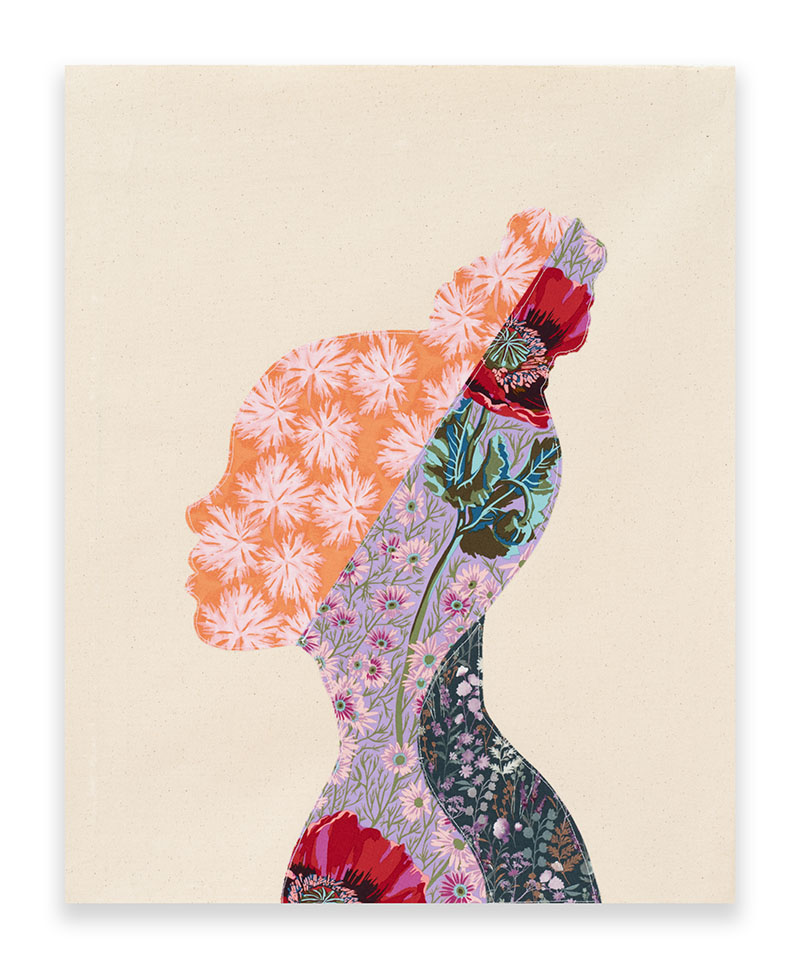
“There’s a really beautiful exchange and intimacy that takes place in this interaction,” Peabody says.
These images serve as the basis for the portraits, which are sewn onto canvas and often incorporate Bahamian fabrics.
“There’s no paint or drawing in any of these portraits. It’s all thread and fabric, and she is selecting fabric that speaks to the energy of the subject, as well as . . . a story or something that connects the two of them,” Peabody says. “These are women that she’s known her whole life.”
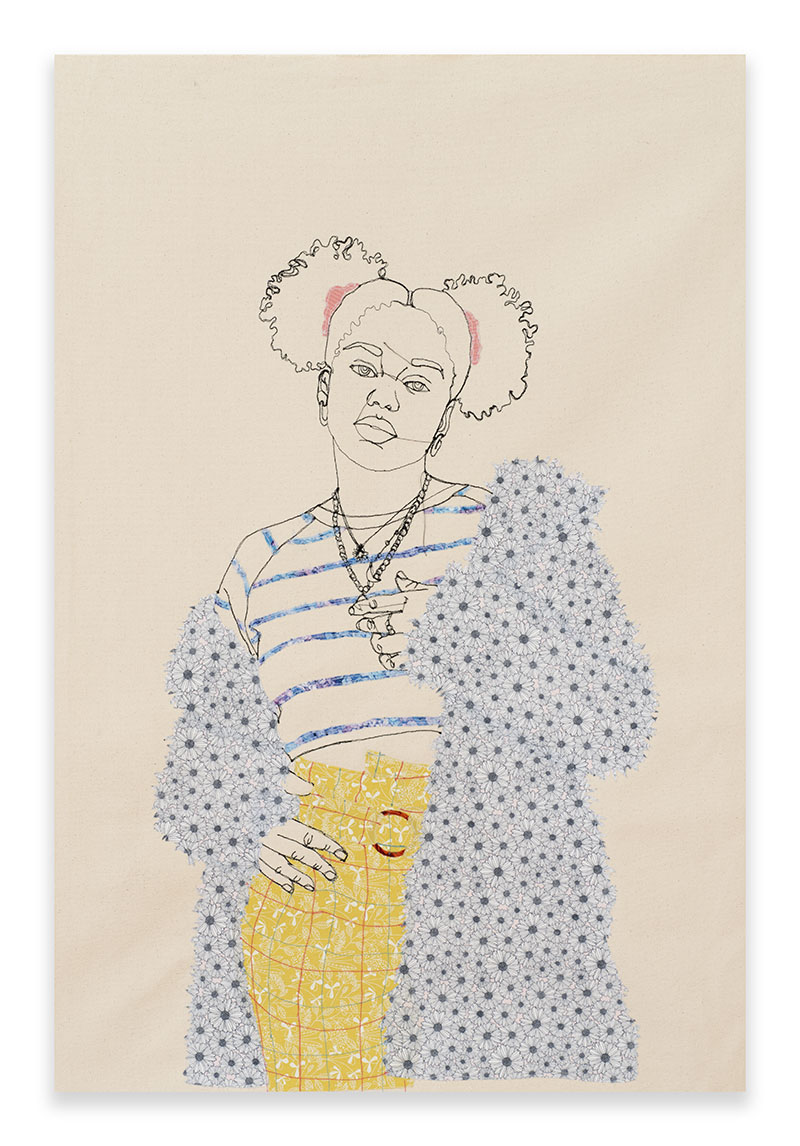
Another unique aspect to Swaby’s art is the way some of the portraits are presented from the underside, rather than the “clean” finished side that we typically see in quilted pieces. In exhibiting the underside, Swaby shows the viewer all the loose threads, knots, and imperfections that are usually kept hidden, both in art and in ourselves. This way of exhibiting speaks to the raw humanity and strength that comes from embracing and showing our full, inner selves, flaws and all.
“She’s choosing that side to display, so there’s a lot of vulnerability in sharing this imperfect side,” Peabody says.
The resulting portraits—some smaller, some life-sized—are bright, avant-garde, fresh, and lively. And all of them are what Peabody calls “a celebration of self-expression” and “a cultivation of love.”
The art itself and the way it’s exhibited within PEM is creating a space for people to see themselves in and interact with the art.
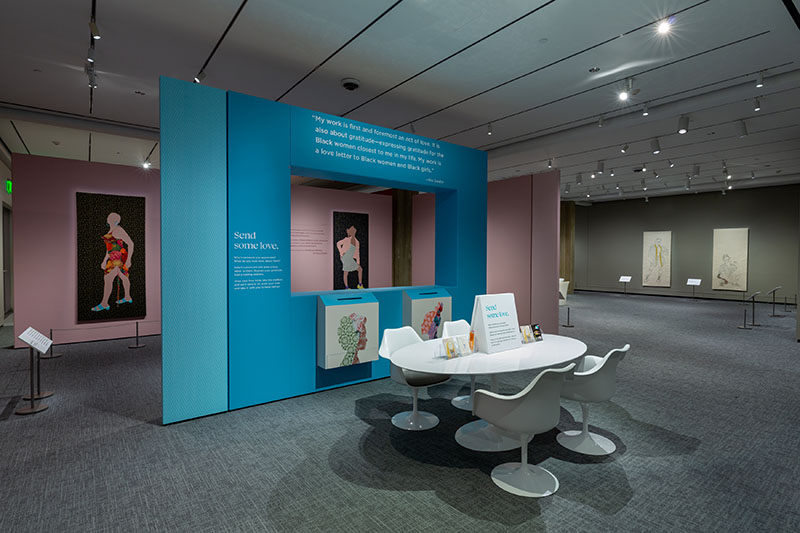
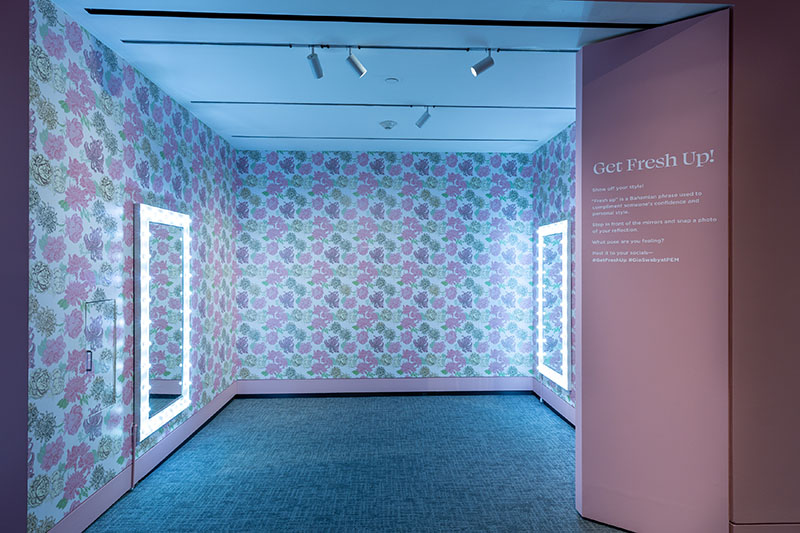

“I really wanted it to feel like the gallery was organized as an embrace,” Peabody says.
The work is presented in a way that’s quieter and smaller in scale at first, then grows to a crescendo before going back down into a more detailed body of work, giving the “energy of being loved, exactly how you are.
“That to me was something that was really powerful, and I think, as a woman, is . . . a message that is really transformative,” Peabody says.
People are also encouraged to interact with the exhibition. For instance, Swaby created a playlist for the exhibition that includes fun, meaningful songs from artists including Beyoncé, Frank Ocean, Lizzo, Aretha Franklin, Solange, and others.
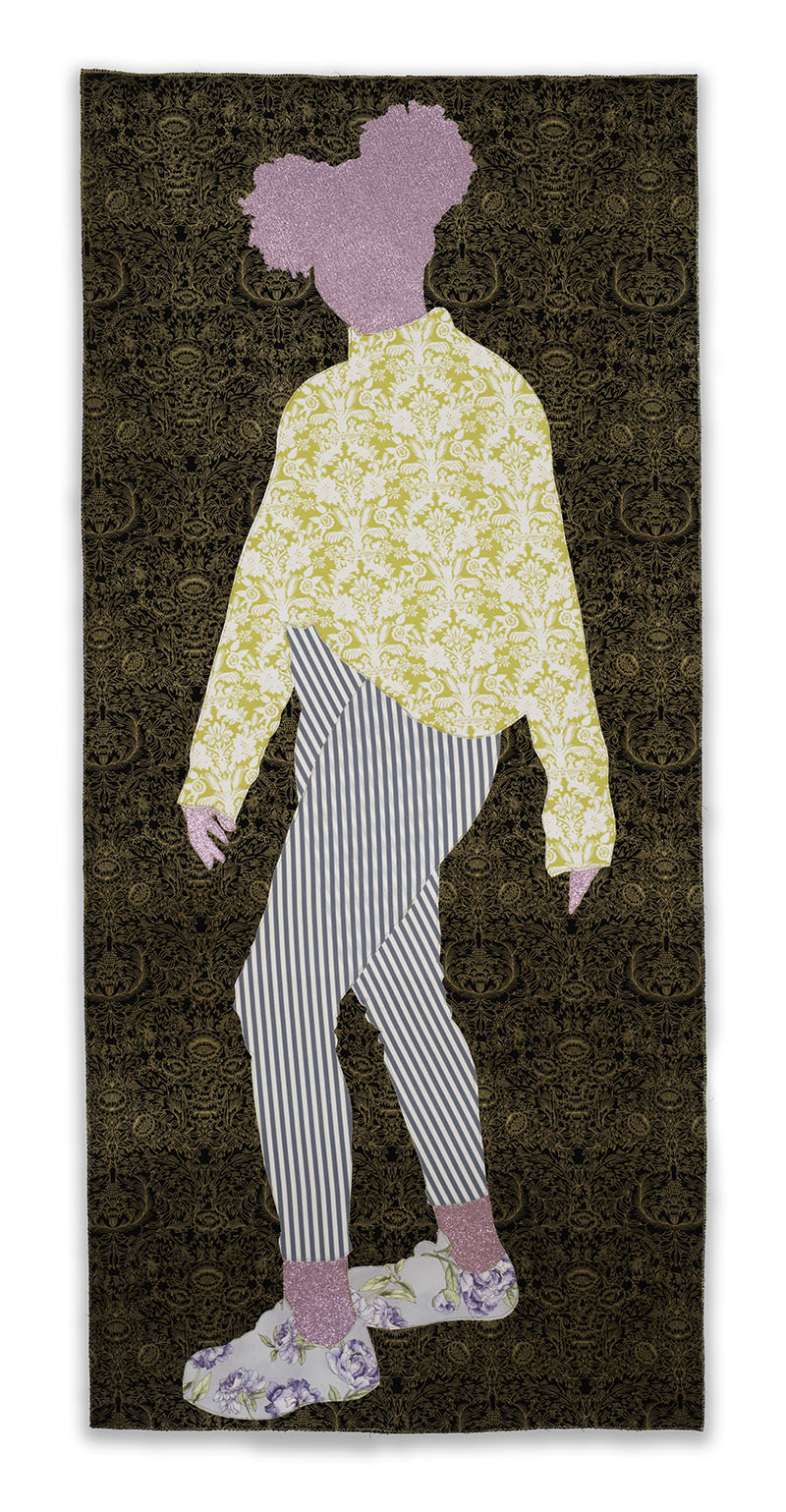
“Get ready to dance!” Peabody says. “You’ll hear these songs when you enter the gallery . . . it’s really fun.”
There are also other ways for visitors to be part of the art, including a love-letter-writing station that encourages people to sit and write a letter and drop it into a little mailbox in the gallery for the museum to mail. There’s also a self-reflection station where visitors can snap a photo of themselves in light-surrounded mirrors and in front of colorful wallpaper backdrops.
Peabody says Swaby’s work at PEM allows people of all different communities to not only feel its happiness, but also to see a bit of themselves within it.
“She is not only representing her friends and her sisters and herself . . . but she is, really importantly, creating space for other Black women and girls to see themselves in a space where they have been historically excluded,” Peabody says. “There’s a lot of joy and there’s a lot of power in these portraits, and so the exhibition is really full of a lot of positivity.”
161 Essex St., Salem, 978-745-9500, pem.org

